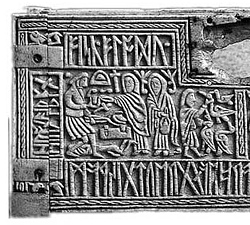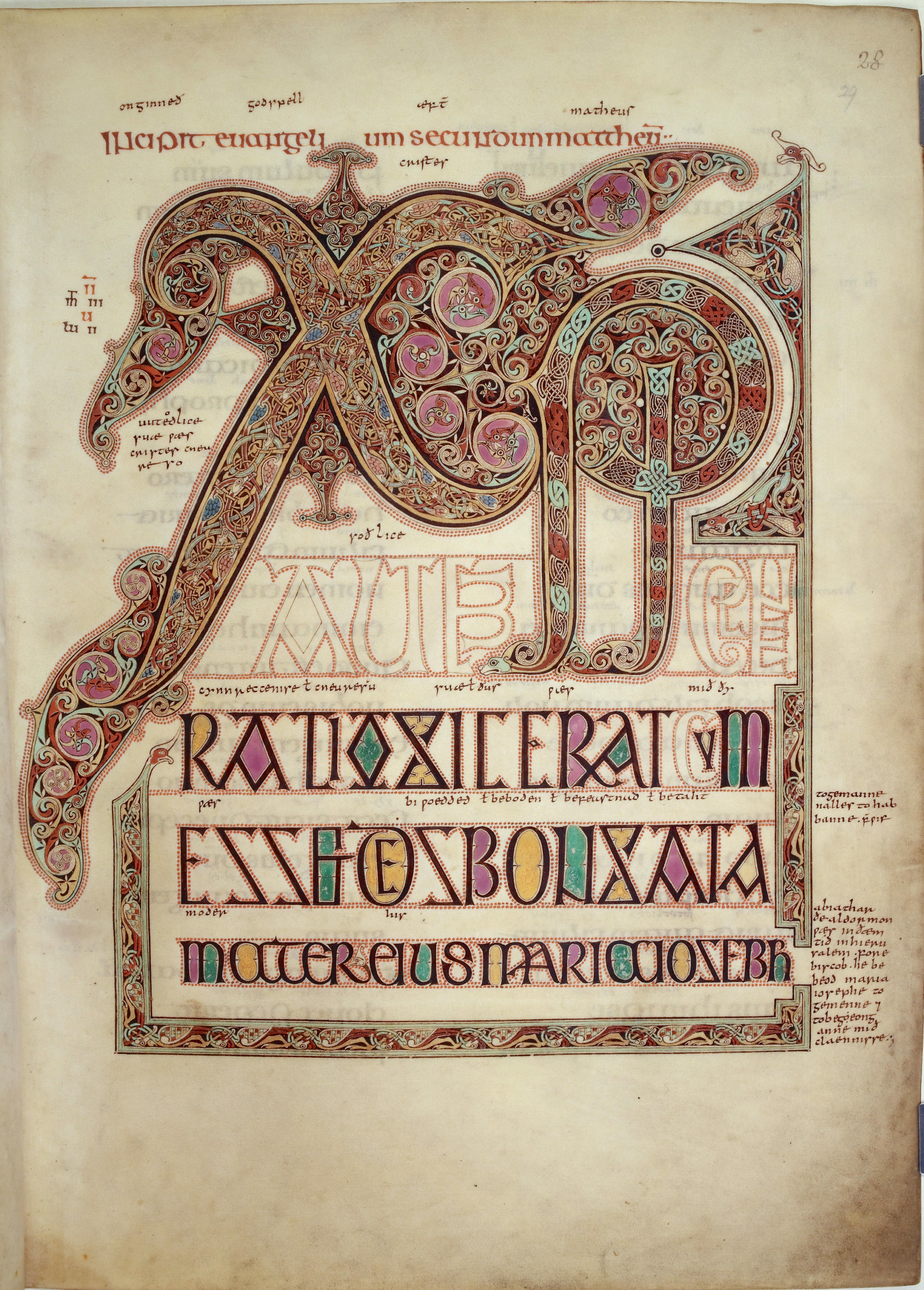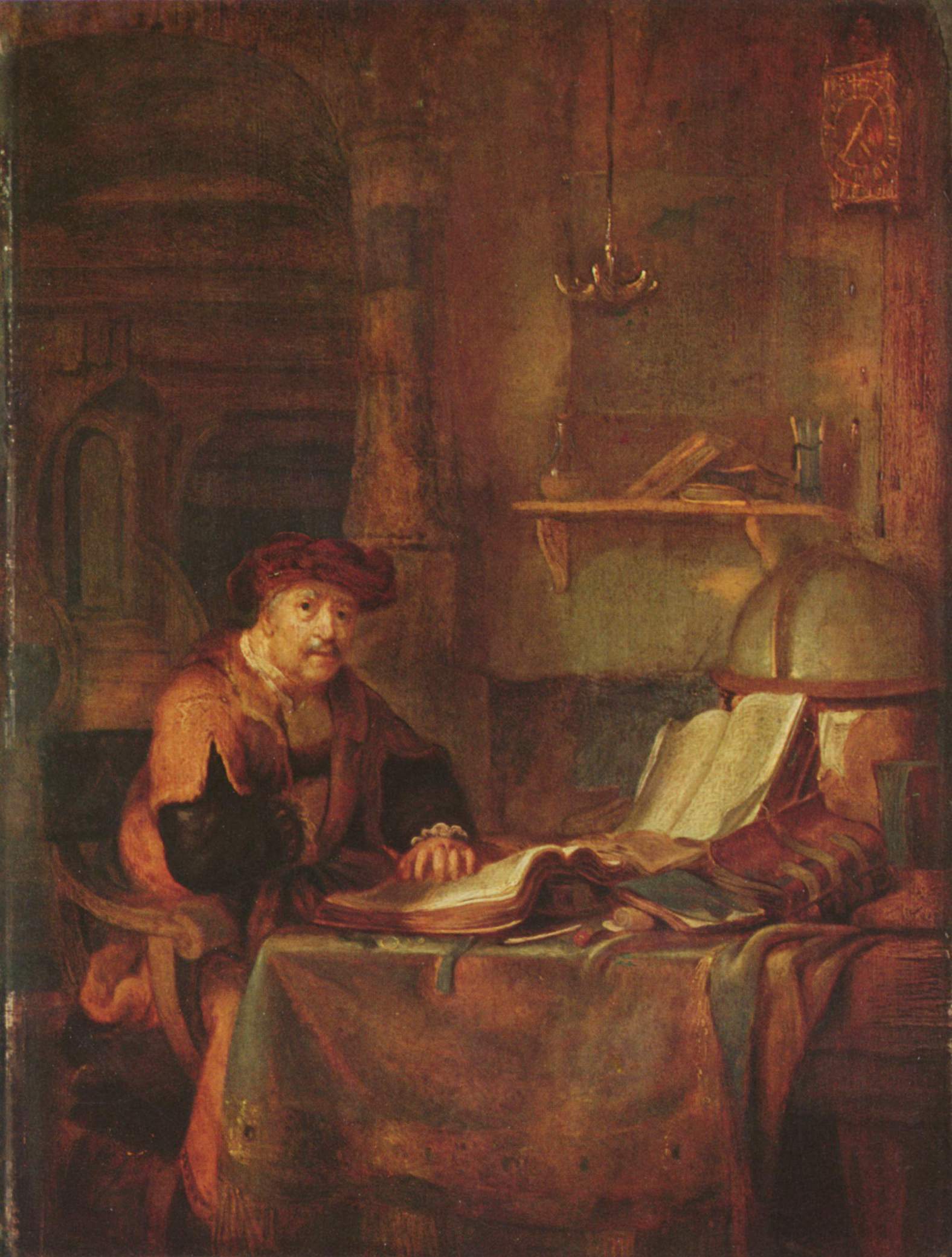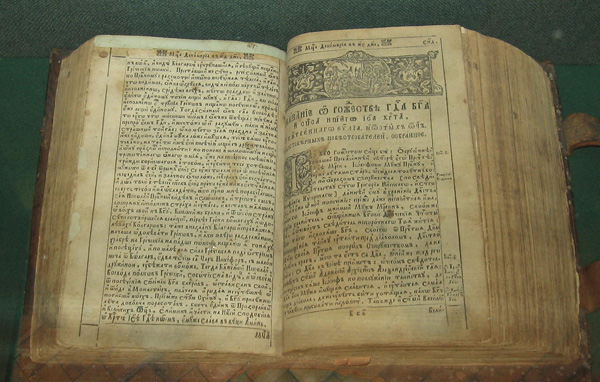|
Blōtmōnaþ
Blōtmōnaþ (modern English: ''blót month'') was the Anglo-Saxon name for the month of November. The name was recorded by the Anglo-Saxon scholar Bede in his treatise ''De temporum ratione'' (The Reckoning of Time), saying "Blod-monath is month of immolations, for it was in this month that the cattle which were to be slaughtered were dedicated to the gods.” An entry in the Menologium seu Calendarium Poeticum, an Anglo-Saxon poem about the months, explains that “this month is called ''Novembris'' in Latin, and in our language the ''month of sacrifice'', because our forefathers, when they were heathens, always sacrificed in this month, that is, that they took and devoted to their idols the cattle which they wished to offer.”Bosworth, Joseph. "An Anglo-Saxon Dictionary Online." Blót-mónaþ. March 21, 2010. Accessed September 20, 2014. http://bosworth.ff.cuni.cz/040642. See also * Germanic calendar *Anglo-Saxons The Anglo-Saxons were a cultural group who inhabited En ... [...More Info...] [...Related Items...] OR: [Wikipedia] [Google] [Baidu] |
Anglo-Saxon Paganism
Anglo-Saxon paganism, sometimes termed Anglo-Saxon heathenism, Anglo-Saxon pre-Christian religion, or Anglo-Saxon traditional religion, refers to the religious beliefs and practices followed by the Anglo-Saxons between the 5th and 8th centuries AD, during the initial period of Early Medieval England. A variant of Germanic paganism found across much of north-western Europe, it encompassed a heterogeneous variety of beliefs and cultic practices, with much regional variation. Developing from the earlier Iron Age religion of continental northern Europe, it was introduced to Britain following the Anglo-Saxon migration in the mid 5th century, and remained the dominant belief system in England until the Christianisation of its kingdoms between the 7th and 8th centuries, with some aspects gradually blending into folklore. The pejorative terms ''paganism'' and ''heathenism'' were first applied to this religion by Christian Anglo-Saxons, and it does not appear that these pagans had a n ... [...More Info...] [...Related Items...] OR: [Wikipedia] [Google] [Baidu] |
Blót
(Old Norse) and or ( Old English) are terms for "blood sacrifice" in Norse paganism and Anglo-Saxon paganism respectively. A comparanda can also be reconstructed for wider Germanic paganism. A ' could be dedicated to any of the Germanic gods, the spirits of the land, and to ancestors. The sacrifice involved aspects of a sacramental meal or feast. Etymology The word is an Old Norse strong neuter noun (genitive ). The corresponding Old English neuter (genitive ) may be influenced by Old Norse; the Old English gospels have prefixed "sacrifice". The reconstructed Proto-Germanic form of the noun is "sacrifice, worship". Connected to this is the Proto-Germanic strong verb with descendants in Gothic (), Old Norse , Old English and Old High German , all of which mean "to sacrifice, offer, worship". The word also appears in a compound attested in Old Norse as "house of worship" and in Old High German as "temple". With a different nominative affix, the same stem is fou ... [...More Info...] [...Related Items...] OR: [Wikipedia] [Google] [Baidu] |
November
November is the eleventh and penultimate month of the year in the Julian and Gregorian Calendars, the fourth and last of four months to have a length of 30 days and the fifth and last of five months to have a length of fewer than 31 days. November was the ninth month of the calendar of Romulus . November retained its name (from the Latin ''novem'' meaning "nine") when January and February were added to the Roman calendar. November is a month of late spring in the Southern Hemisphere and late autumn in the Northern Hemisphere. Therefore, November in the Southern Hemisphere is the seasonal equivalent of May in the Northern Hemisphere and vice versa. In Ancient Rome, Ludi Plebeii was held from November 4–17, Epulum Jovis was held on November 13 and Brumalia celebrations began on November 24. These dates do not correspond to the modern Gregorian calendar. November was referred to as Blōtmōnaþ by the Anglo-Saxons. Brumaire and Frimaire were the months on which Novemb ... [...More Info...] [...Related Items...] OR: [Wikipedia] [Google] [Baidu] |
Germanic Calendar
The early Germanic calendars were the regional calendars used among the early Germanic peoples before they adopted the Julian calendar in the Early Middle Ages. The calendars were an element of early Germanic culture. The Germanic peoples had names for the months that varied by region and dialect, but they were later replaced with local adaptations of the Julian month names. Records of Old English and Old High German month names date to the 8th and 9th centuries, respectively. Old Norse month names are attested from the 13th century. As with most pre-modern calendars, the reckoning used in early Germanic culture was likely lunisolar. As an example, the Runic calendar developed in medieval Sweden was lunisolar, fixing the beginning of the year at the first full moon after winter solstice. Months The Germanic calendars were lunisolar, the months corresponding to lunations. Tacitus writes in his ''Germania'' (Chapter 11) that the Germanic peoples observed the lunar months. The ... [...More Info...] [...Related Items...] OR: [Wikipedia] [Google] [Baidu] |
Anglo-Saxon
The Anglo-Saxons were a Cultural identity, cultural group who inhabited England in the Early Middle Ages. They traced their origins to settlers who came to Britain from mainland Europe in the 5th century. However, the ethnogenesis of the Anglo-Saxons happened within Britain, and the identity was not merely imported. Anglo-Saxon identity arose from interaction between incoming groups from several Germanic peoples, Germanic tribes, both amongst themselves, and with Celtic Britons, indigenous Britons. Many of the natives, over time, adopted Anglo-Saxon culture and language and were assimilated. The Anglo-Saxons established the concept, and the Kingdom of England, Kingdom, of England, and though the modern English language owes somewhat less than 26% of its words to their language, this includes the vast majority of words used in everyday speech. Historically, the Anglo-Saxon period denotes the period in Britain between about 450 and 1066, after Anglo-Saxon settlement of Britain, th ... [...More Info...] [...Related Items...] OR: [Wikipedia] [Google] [Baidu] |
Scholarly Method
The scholarly method or scholarship is the body of principles and practices used by scholars and academics to make their claims about the subject as valid and trustworthy as possible, and to make them known to the scholarly public. It is the methods that systemically advance the teaching, research, and practice of a given scholarly or academic field of study through rigorous inquiry. Scholarship is noted by its significance to its particular profession, and is creative, can be documented, can be replicated or elaborated, and can be and is peer reviewed through various methods. The scholarly method includes the subcategories of the scientific method, in which scientists prove their claims, and the historical method, in which historians verify their claims. Methods The historical method comprises the techniques and guidelines by which historians use primary sources and other evidence to research and then to write history. The question of the nature, and indeed the possibilit ... [...More Info...] [...Related Items...] OR: [Wikipedia] [Google] [Baidu] |
Bede
Bede ( ; ang, Bǣda , ; 672/326 May 735), also known as Saint Bede, The Venerable Bede, and Bede the Venerable ( la, Beda Venerabilis), was an English monk at the monastery of St Peter and its companion monastery of St Paul in the Kingdom of Northumbria of the Angles (contemporarily Monkwearmouth–Jarrow Abbey in Tyne and Wear, England). Born on lands belonging to the twin monastery of Monkwearmouth–Jarrow in present-day Tyne and Wear, Bede was sent to Monkwearmouth at the age of seven and later joined Abbot Ceolfrith at Jarrow. Both of them survived a plague that struck in 686 and killed a majority of the population there. While Bede spent most of his life in the monastery, he travelled to several abbeys and monasteries across the British Isles, even visiting the archbishop of York and King Ceolwulf of Northumbria. He was an author, teacher ( Alcuin was a student of one of his pupils), and scholar, and his most famous work, '' Ecclesiastical History of the Engli ... [...More Info...] [...Related Items...] OR: [Wikipedia] [Google] [Baidu] |
The Reckoning Of Time
''The Reckoning of Time'' ( la, De temporum ratione) is an Anglo-Saxon era treatise written in Medieval Latin by the Northumbrian monk Bede in 725. The treatise includes an introduction to the traditional ancient and medieval view of the cosmos, including an explanation of how the spherical Earth influenced the changing length of daylight, of how the seasonal motion of the Sun and Moon influenced the changing appearance of the new moon at evening twilight, and a quantitative relation between the changes of the tides at a given place and the daily motion of the Moon. ''The Reckoning of Time'' describes the principal ancient calendars, including those of the Hebrews, the Egyptians, the Romans, the Greeks, and the Anglo-Saxons The Anglo-Saxons were a cultural group who inhabited England in the Early Middle Ages. They traced their origins to settlers who came to Britain from mainland Europe in the 5th century. However, the ethnogenesis of the Anglo-Saxons happened wit .. ... [...More Info...] [...Related Items...] OR: [Wikipedia] [Google] [Baidu] |
Menologium Seu Calendarium Poeticum
Menologium (), also written menology, and menologe, is a service-book used in the Eastern Orthodox Church and those Eastern Catholic Churches which follow the Byzantine Rite. From its derivation from Greek , ''menológion'', from μήν ''mén'' "a month", via Latin ''menologium'', the literal meaning is "month-set"—in other words, a book arranged according to the months. Like a good many other liturgical terms (e.g., lectionary), the word has been used in several quite distinct senses. Definitions ''Menologion'' has several different meanings: * "Menologion" is not infrequently used as synonymous with "Menaion" (pl. ''Menaia''). The Menaia, usually in twelve volumes—one for each month—but sometimes bound in three, form an office-book, which in the Orthodox Church, corresponds roughly to the '' Proprium Sanctorum'' of the Latin Breviary. They include all the propers (variable parts) of the services connected with the commemoration of saints and in particular the cano ... [...More Info...] [...Related Items...] OR: [Wikipedia] [Google] [Baidu] |
Latin
Latin (, or , ) is a classical language belonging to the Italic branch of the Indo-European languages. Latin was originally a dialect spoken in the lower Tiber area (then known as Latium) around present-day Rome, but through the power of the Roman Republic it became the dominant language in the Italian region and subsequently throughout the Roman Empire. Even after the fall of Western Rome, Latin remained the common language of international communication, science, scholarship and academia in Europe until well into the 18th century, when other regional vernaculars (including its own descendants, the Romance languages) supplanted it in common academic and political usage, and it eventually became a dead language in the modern linguistic definition. Latin is a highly inflected language, with three distinct genders (masculine, feminine, and neuter), six or seven noun cases (nominative, accusative, genitive, dative, ablative, and vocative), five declensions, four ... [...More Info...] [...Related Items...] OR: [Wikipedia] [Google] [Baidu] |
Anglo-Saxons
The Anglo-Saxons were a cultural group who inhabited England in the Early Middle Ages. They traced their origins to settlers who came to Britain from mainland Europe in the 5th century. However, the ethnogenesis of the Anglo-Saxons happened within Britain, and the identity was not merely imported. Anglo-Saxon identity arose from interaction between incoming groups from several Germanic tribes, both amongst themselves, and with indigenous Britons. Many of the natives, over time, adopted Anglo-Saxon culture and language and were assimilated. The Anglo-Saxons established the concept, and the Kingdom, of England, and though the modern English language owes somewhat less than 26% of its words to their language, this includes the vast majority of words used in everyday speech. Historically, the Anglo-Saxon period denotes the period in Britain between about 450 and 1066, after their initial settlement and up until the Norman Conquest. Higham, Nicholas J., and Martin J. Ryan. ''The An ... [...More Info...] [...Related Items...] OR: [Wikipedia] [Google] [Baidu] |
Old English
Old English (, ), or Anglo-Saxon, is the earliest recorded form of the English language, spoken in England and southern and eastern Scotland in the early Middle Ages In the history of Europe, the Middle Ages or medieval period lasted approximately from the late 5th to the late 15th centuries, similar to the post-classical period of global history. It began with the fall of the Western Roman Empire .... It was brought to Great Britain by Anglo-Saxon settlement of Britain, Anglo-Saxon settlers in the mid-5th century, and the first Old English literature, Old English literary works date from the mid-7th century. After the Norman conquest of 1066, English was replaced, for a time, by Anglo-Norman language, Anglo-Norman (a langues d'oïl, relative of French) as the language of the upper classes. This is regarded as marking the end of the Old English era, since during this period the English language was heavily influenced by Anglo-Norman, developing into a phase know ... [...More Info...] [...Related Items...] OR: [Wikipedia] [Google] [Baidu] |







